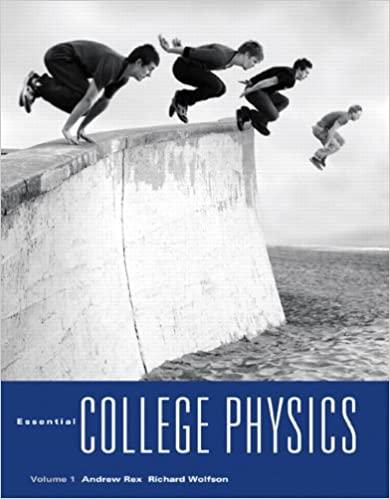Answered step by step
Verified Expert Solution
Question
1 Approved Answer
Read the following procedure carefully. After reading the entire procedure, you may begin the lab. On the gray panel on the right in the simulation,
- Read the following procedure carefully. After reading the entire procedure, you may begin the lab.
- On the gray panel on the right in the simulation, make sure the planet is set to "Earth". The "Damping" control should be moved all the way to the right ("lots").Click the box next to "Displacement and Natural Length". This will display a green arrow from the at rest (equilibrium position) of the spring to the stretched length after hanging a mass on the spring. The "Spring Constant 1" control at the top, just to the right of the hanging spring should be positioned three marks to the right of "Small".
- Set the Mass control at the top, just to the left of the hanging spring to 300 g. Hang the 300 g mass on spring 1 by clicking on the mass with the hook at the bottom left and dragging it to the bottom of the spring, and wait for it to come to rest. Click on the yellow ruler on the right and drag it over to the spring and position the ruler next to the mass such that its zero mark is even with the dashed reference line where the green arrow starts, and read off the distance from the reference line to the bottom of the spring (the point of the arrow). This is the distance the spring has stretched as a result of the mass being attached to it.
- Fill out the first row of the first data table, being sure to record the appropriate units in the column headings at the top.Note that weight = mass * gravity, but the mass must be converted to kilograms in order for the weight to be in Newtons. In equilibrium, the spring force is equal to the weight attached to it.
- Change the mass from 300 g to 200 g on the Mass Control. Measure the distance that the spring is stretched, and fill out the second row of the data table.
- Change the mass to 100 g on the Mass Control and repeat again, and record the results in the third row.
- Change the mass to 50 g on the Mass Control and repeat again, and record the results in the fourth row.
- If you have not already done so, fill in the following tables with the values you found in the simulation.
Spring 1:
| Mass Units: g | Weight Units: kgm/s^2 | Spring Force Units: g | Distance Stretched Units: cm |
| 300 | 2.94 | 300 | 50 |
| 200 | 1.96 | 200 | 33 |
| 100 | 0.98 | 100 | 17 |
| 50 | 0.49 | 50 | 9 |
- Make a graph of the spring force vs. the distance stretched. Draw the straight lines you believe best represent the data points and find the slope of your best fit line, including the units. Show me your calculations.
Slope1 =
- What does the slope physically represent? (Hint: W = F and k = F/x)
- Now that you know the spring constant of spring 1. Using your spring constant and distance stretched, determine the spring force for each of the unknown masses. Hint:Spring Force = Spring Constant*Distance Stretched (F = kx). Using the fact that the Spring Force is equal to the Weight of the hanging mass (Spring Force = Weight of Hanging Mass), record the Weight of the hanging mass and determine the mass of each of the two unknown (colored) objects in the simulation by hanging each of them on spring 1 and measuring the stretch of the spring.Record the results in the below data table. Remember that W = mg so m = W/g.
Spring 1 Unknown Masses:
| Object | Distance Stretched Units: cm | Spring Force Units: | Weight Units: | Mass Units: |
| Blue | 38 | |||
| Red | 61 |
- Note that your graph needs to be submitted along with your write up. Submit a hand-drawn graph, attached as a scanned document or well-focused digital photo.
Step by Step Solution
There are 3 Steps involved in it
Step: 1

Get Instant Access to Expert-Tailored Solutions
See step-by-step solutions with expert insights and AI powered tools for academic success
Step: 2

Step: 3

Ace Your Homework with AI
Get the answers you need in no time with our AI-driven, step-by-step assistance
Get Started


